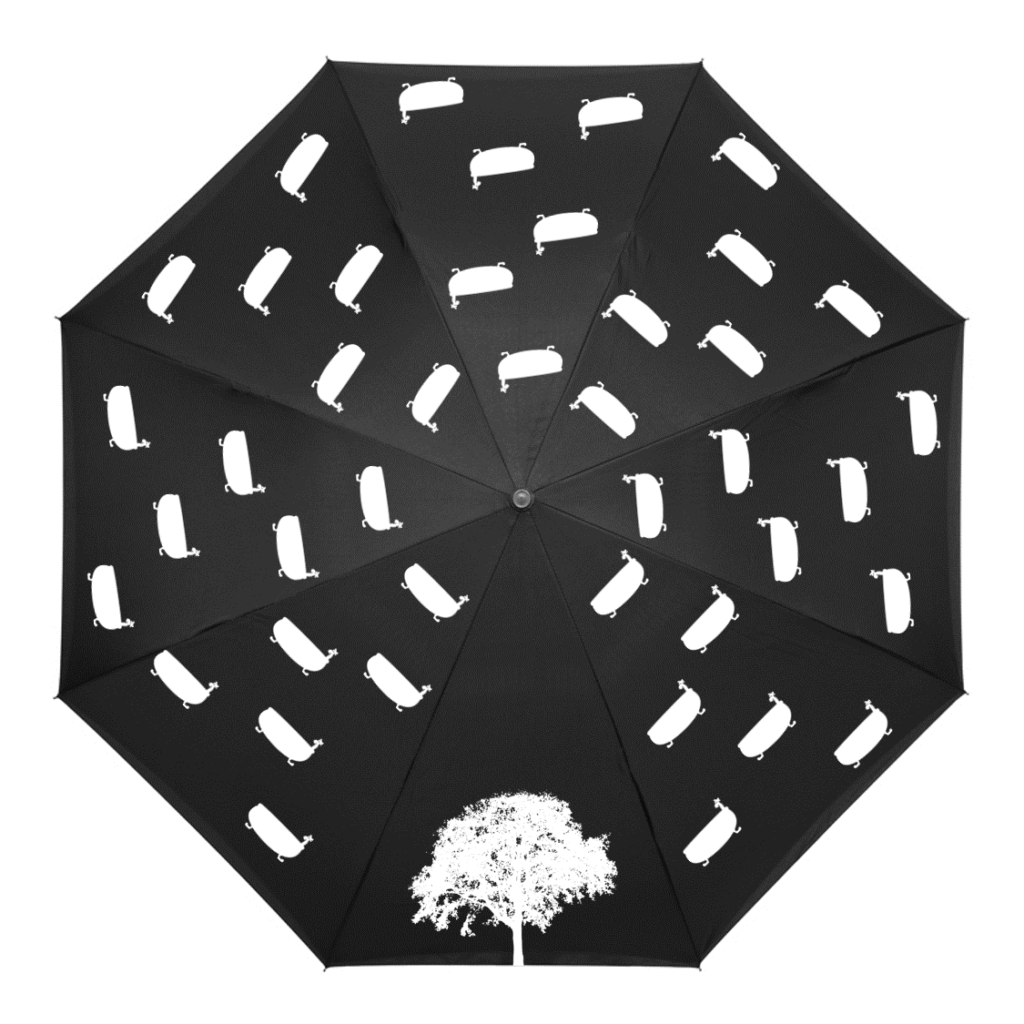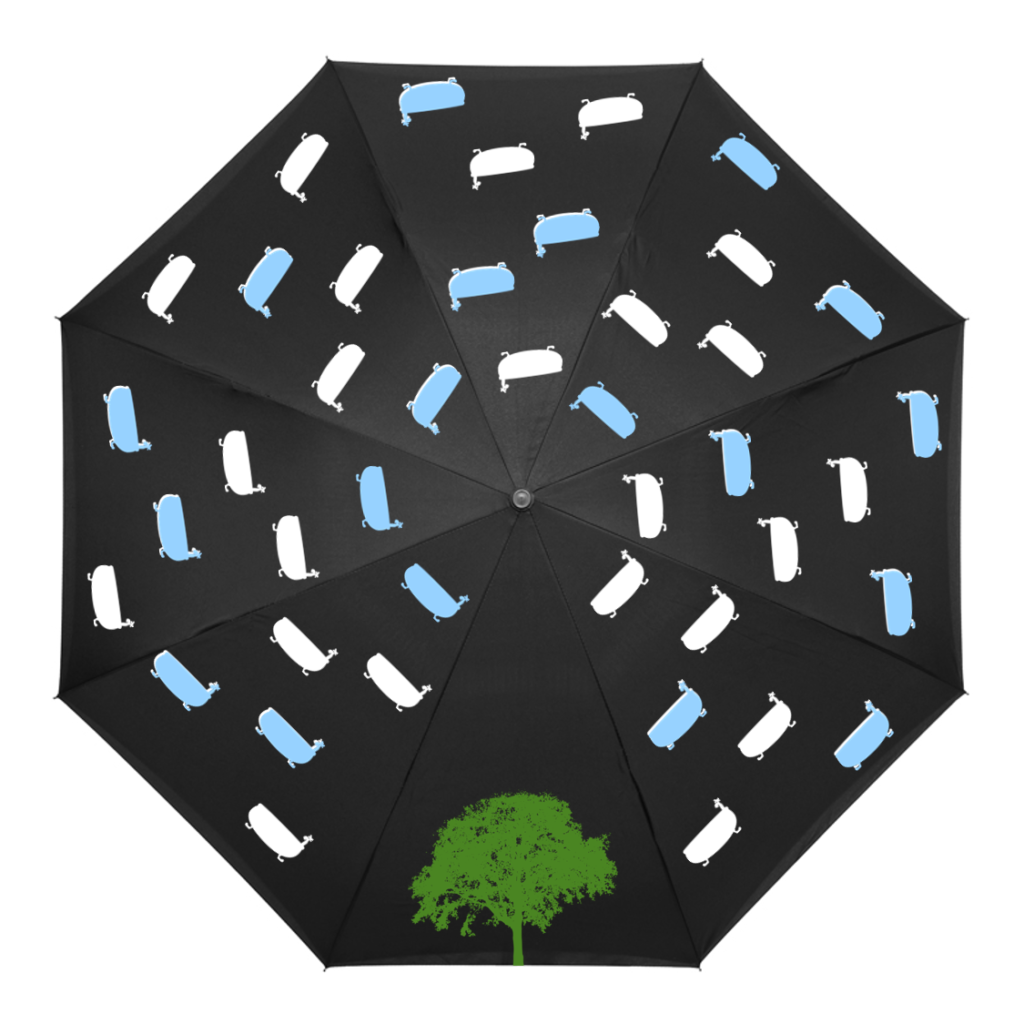by Eileen Hu

I sketched out a data sculpture idea using the NYC street tree data that I worked with in sketch 1 (https://datastudio2020.datatherapy.org/2020/03/05/trees-in-nyc-sign-up-to-help/)
This sculpture would be an installation in Central Park near a playground so it would get traffic from kids. The sculpture would have umbrellas “planted” in the ground, creating a “street” lined with the umbrellas that people could walk down. This connects to the idea that street trees provide shelter and protect the urban environment around them. Originally I was going to mock up what one of the umbrellas would look like with colored paper cutouts, but I realized that the umbrellas in my house are mostly patterned and might be hard to set up in a standing position. Instead, I’m sharing some illustrations that hopefully are enough to convey the concept!
One out of five umbrellas would be knocked over, to represent the one in five street trees in the NY Street Tree Census that were shown to be not in good health (fair or poor health).
To add more information, the umbrellas would have graphics printed on them with a dye that changes from white to colored when wet, a technology that is used for novelty umbrellas.
People interacting with the installation would walk through the street and pour water on the umbrellas to reveal facts about NY street trees.
For example, an average street tree will intercept 1432 gallons of stormwater each year, equivalent to about 18 bathtubs. So out of the pattern of bathtubs on an umbrella, 18 would change color. I do need to think more about this representation because it makes the values look like a percentage.
There would also be an accompanying sign with information at the end of the installation that would also direct viewers to a website to learn more, in addition to an umbrella at the end with the call to action to “Show some T(ree)LC”.
I would try to set this up so that water poured out onto the umbrellas would not be wasted, maybe by having the umbrellas sitting in a channel that collects the water which could then later be used for watering plants. In addition, I would plan to have these umbrellas to be available for sale so that people could use them in their everyday lives and engage others.


















